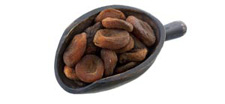Turkish Apricot

Is The Turkish Apricot The World's Tastiest?
The very name Turkish apricot, suggests a somewhat rare or difficult to find fruit, one that has an exotic taste, perhaps the tastiest of all the world's apricot varieties. The Turkish apricot is indeed very tasty, both fresh and dried, in addition to being packed with nutrition and providing a number of important health benefits.
As far as being rare or exotic is concerned, it needs to be taken into account that a majority of apricots grown in the world are grown in Turkey. Statistically at least, Turkey exports more apricots than does any other country, greatly out pacing the number 2 and 3 exporters, Iran and Malaysia, by a significant factor. Armenia is another of the world’s prime apricot producers.
As far as taste is concerned, there is little disagreement that the Turkish apricot's sweet taste is as good as any. The Turks however have a saying to the affect that when something is "as good as it gets”, that something is comparable to "an apricot from Damascus", implying that the Syrian apricot is every bit as tasty and perhaps just a bit more so.
Nutrition - Most of the apricots imported from Turkey into the United States are dried and packaged. A dried Turkish apricot has a shelf life of around 3 months, but if you put them in the freezer, they will retain their flavor for up to a year. The fruit is an extremely good source of dietary fiber, in fact eating the fresh fruit is considered an excellent way to rid oneself of constipation. The Turkish apricot is also a good source of Vitamins A and C, carbohydrates, calcium, iron, and potassium. Vitamin A is a powerful anti-oxidant, and as the apricot is also rich in beta-carotene, the fruit is very healthy as far as the well being of the eyes is concerned. When you eat a Turkish apricot you don't have to worry about saturated fat, cholesterol, or sodium. The sugars are a bit high as one might expect in such a sweet tasting fruit. The pit or stone of the apricot also has nutritional value, but after eating the sweet, fruity flesh, it's a little difficult to give much thought to taking on a rather hard stone.
The Turkish apricot, and any other apricot for that matter, is a member of the rose family - Rosacea, and the genus - Prunus, which includes peaches, plums, cherries, and almonds. The apricot is smaller in size than the peach, less juicy, but often more sweet in its taste. Apricots can even be grafted on a peach tree, as they are very close relatives with few distinguishing differences. Of course one would eat the soft inside of the stone and not the hard shell. There is a cautionary note. In spite of certain healthful nutritional elements found in the stone, there are also certain chemicals present, and not more than two or three should be consumed at any one time.
Cultivation - The Turkish apricot, though grown in the Mediterranean area is not a subtropical plant but prefers warm to hot summers and freezing winters. The apricot tree is quite hardy, able to withstand subzero temperatures for a long period as long as there is a covering of snow on the ground. Spring frosts are the major limiters of the apricot harvest as the tree tends to flower rather early. In the United States, apricots are hardy in USDA zones 3-8, doing best in zones 3-5. Areas such as the Columbia Basin in British Columbia and Washington State, featuring hot summers and very cold winters, are ideal for apricot production.
The next time you purchase a bag of dried apricots, look for Turkish apricots and see if they live up to their reputation. It will probably be difficult to find a fresh Turkish apricot on the market unless one is in Europe, particularly southern Europe, but if the opportunity presents itself, go for it. Next thing you know you'll be seeking an apricot from Damascus.